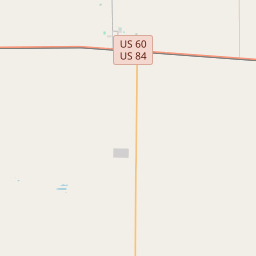Estella García and Women of the WPA, Fabric Artists







Side 1
Estella García taught colcha embroidery at Melrose, New Mexico, for the Federal Arts Program in the 1930s. Anglo and Hispana women in Garcia’s class collaborated to design and produce embroidered theater curtains, wall hangings, and seat coverings for institutions across the state including the Albuquerque Little Theatre. Garcia is one of the few Hispanic women artists recorded in FAP documents. Unfortunately, few examples of her work remain.Side 2
Under the umbrella of the WPA, the National Youth Administration, and the Federal Arts Program, instructors and students were recruited to work in community-based art centers that produced fabric arts, including weaving, colcha embroidery, and lace-making. While the artistic creativity of these mostly unrecognized women was considered “women’s work for home use” by WPA administrators, this now popular New Mexican art form has been revitalizedThe Historic Women Marker Initiative of 2007 captured the public’s imagination. It has received international attention for its ambitious goal of telling women’s history in New Mexico on some of the state’s 650 Official Scenic Historic Markers. Before 2007, perhaps three markers mentioned women at all.
The lives of the only known female Buffalo solider, one of the world’s most famous artists, and unsung heroes like Sally Rooke who gave her life at her switchboard warning Folsom’s citizens of a wall of water approaching their town are honored on 75 women’s history markers.
The first phase of the Initiative concluded in 2010. Ten more markers were installed in 2015 and an additional 25 are expected to bring their numbers to an even 100 in the coming years. The program is a partnership of the New Mexico Women’s Forum, HPD, CPRC, New Mexico Department of Transportation, and the public. The 2006 legislature made the initial 65 historic markers possible.
Like all state historic markers, the women’s history markers are designed in the Park Service Rustic style adopted when the program began in 1935. What’s different is their perspective of New Mexico history.
New Mexico was one of the last territories to become a state, gaining statehood in 1912. Before that, it had been part of the Spanish Empire, Mexico, and the United States Territory of New Mexico.
In 1902, Curry County was officially established, named after the territorial governor, George Curry. The county seat was initially located in nearby Pleasant Hill before being moved to its present location in Clovis in 1909. The newly formed county quickly became known for its agricultural activities, particularly wheat farming and cattle ranching.
One notable event in the history of Curry County occurred in 1931 with the establishment of Cannon Air Force Base. The base, initially called Army Air Base, was created as a result of the growing military presence in the country and played an important role during World War II and the subsequent years. Cannon Air Force Base continues to be an essential part of the county's economy and is a major employer in the region.
In recent decades, Curry County has seen significant growth and development. The county has diversified its economy, with industries such as healthcare, retail, and manufacturing contributing to its prosperity. Additionally, the county has become a regional hub for education, with several colleges and universities offering a range of programs.
Overall, Curry County has a rich history that encompasses Native American settlements, pioneer days, military presence, and economic diversification, all of which have shaped the county into what it is today.
Curry County Timeline
This timeline provides a condensed summary of the historical journey of Curry County, New Mexico.
- 1876: Curry County is officially established by the New Mexico Territorial Legislature.
- 1907: Clovis is incorporated as the county seat of Curry County.
- 1928: The discovery of oil in Curry County leads to an economic boom.
- 1942: The U.S. Army establishes Cannon Air Force Base in Curry County.
- 1967: The Curry County Fair is first held, becoming an annual tradition.
- 1991: The National Parks Service designates the Clovis site as a National Historic Landmark.
- 2019: Curry County celebrates its 143rd anniversary.